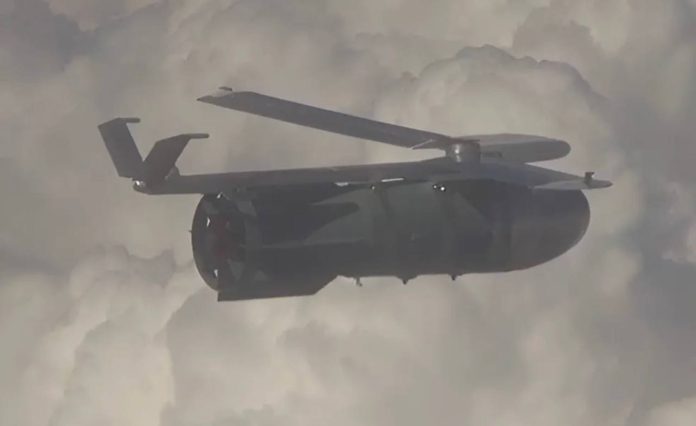Russian forces turned their FAB-3000 aerial bomb into a guided weapon for strikes on Ukraine, while Ukraine’s air defences proved ineffective against such bombs.
On Monday, Ukrainian media reported a large-scale bombing operation against a Ukrainian military deployment centre located in the Ukrainian village of Niu-York. The Russian Defence Ministry also shared footage showing Su-34s loading a three-tonne bomb and then dropping it during a combat flight.
The crew of a Su-34 fighter-bomber executed an attack using a FAB-3000 bomb on a temporary deployment site of the Ukrainian Armed Forces within the Sever group’s area of responsibility. This was achieved using [a] FAB-3000 aviation bomb equipped with a universal planning and correction module. Following the successful completion of the mission, the crew safely returned to their base. Objective control measures confirmed the target was hit.
The “FAB” designation stands for “High-Explosive Aerial Bomb.” The type of charge used in the FAB-3000 is a high-explosive filler. The explosive is designed to produce a powerful blast effect upon detonation, making the bomb highly efficient against a variety of targets, including fortified structures, bunkers, and large enemy troop formations, according to Bulgarian Military.
The bomb is equipped with an advanced Universal Gliding and Correction Module (UGCM). It is attached to the bomb just prior to use, facilitating guidance and correction by ground personnel. The exact composition of the explosive filler can vary, but is usually a mixture of TNT and other explosive compounds. It is reported that when detonated, the bomb can produce a powerful explosion capable of causing significant damage over a large area.
The blast radius can reach hundreds of metres, with the resulting shock wave causing significant damage to buildings, infrastructure, and military equipment. The bomb is designed to penetrate and destroy heavily fortified targets.
Rostec, an advanced technology conglomerate, announced that the effective range of the FAB-3000 would be significantly increased by the introduction of the new Universal Gliding and Correction Module. The company intends to develop its own bombs and improve existing munitions with new technologies. The Ministry of Defence is also considering the possibility of expanding the Russian Aerospace Forces fleet with aircraft capable of carrying and using the UGCM.
Formidable weapon
On 22 June, Forbes reported the first case of the Russian Air Force dropping a 3.3-ton glide bomb. A Russian Su-34 fighter-bomber reportedly dropped one FAB-3000 bomb with retractable wings and satellite guidance on a multi-story building that Russian intelligence identified as a staging area for Ukrainian forces at Lyptsi, 10 miles north of Kharkiv in northern Ukraine.
A day later, another Su-34 dropped one of the 6,600-pound FAB-3,000s on another large building that the Russians suspected of being a hideout for Ukrainian forces. According to military experts, the FAB-3000 causes explosive damage over 200 yards away and scatters deadly fragments over 1,200 yards.
However, the FAB-3000 is not the first aerial munition of destructive power, according to Forbes. In 2017, the US Air Force dropped one of its 11-tonne Massive Ordnance Air Blast bombs on Islamic State militants in Afghanistan. The Pentagon then published a video of the blast as a warning to the surviving militants.
According to the Financial Times, Ukrainian commander-in-chief Oleksandr Syrskyi claimed Russia used “guided air bombs,” commonly referred to as “glide bombs,” in April.
The experience of the past months and weeks shows that the enemy has significantly increased aircraft activity, using guided air bombs that destroy our positions.
Ukrainian analysts close to the defence ministry reportedly described the FAB-3000 as a weapon against which Kyiv has “practically no countermeasures”. Ukrainian Foreign Minister Dmytro Kuleba also stated that his soldiers “are being massively and I would say even routinely attacked by guided aerial bombs that wipe out our positions.”
They are very simple in essence, so you cannot jam them, you cannot hide from them — the only way to protect yourself from them is to shoot down the bomber that carries this bomb.
“Practically no countermeasures”
The International Institute for Strategic Studies, a London-based think-tank, said in a report that “the growing number of glide-bomb attacks are indicative of the scarcity of air defence weapons.” The shortage was due in part to delays in European military aid and the stalling of the aid package by the US Congress.
Ukraine’s air defence difficulties are evidenced by recent strikes on the Artem plant in Kyiv and the Pivdenmash military plant in Dnipropetrovsk.
Given that allied-supplied NASAMS and Patriot air defence systems missed most of the cruise and ballistic missiles, and taking into account the number of carrier aircraft involved, military experts suggest that Ukrainian air defences managed to intercept “about 10 per cent of the missiles or even less.”
The FAB-300s pose a particular threat, since air defences, including the US Patriot and Norway’s NASAMS, cannot reach them as they are not conventional missiles.
The Russians’ pioneering warfare does not allow Ukrainian forces to adapt effectively against new tactics. Sometimes sophisticated, sometimes preposterously simple, they nevertheless catch Ukrainian defences off guard. For instance, in May, Russian troops showed their “monstrous vehicles” on the battlefield, surprising not only Ukrainian soldiers, but also foreign media and military experts.
